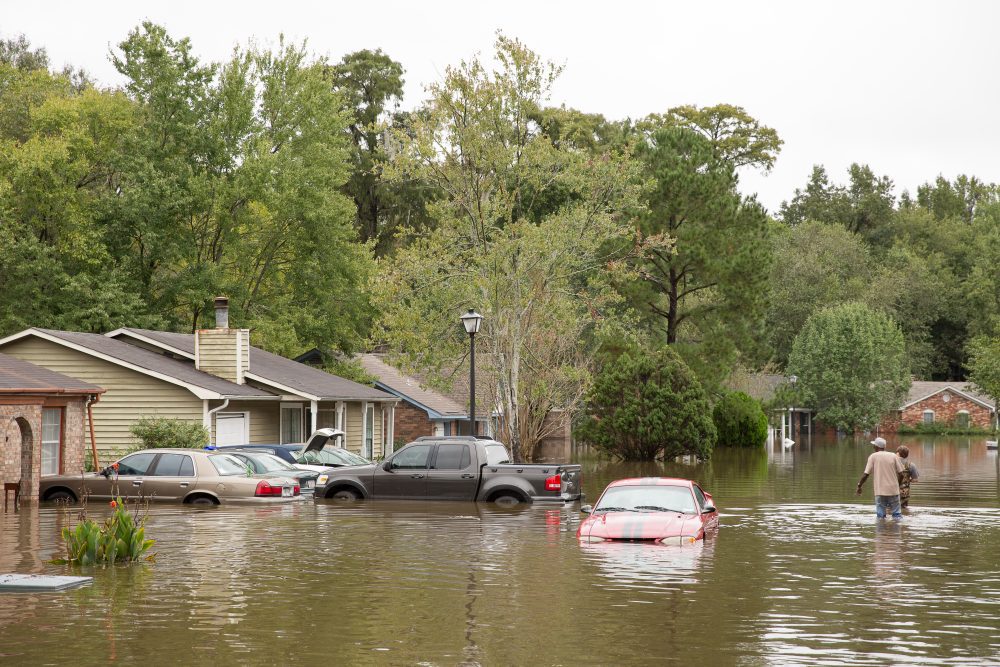This article is part of the Under the Lens series
Dual Crises: Housing in a Changing Climate
With a permanent window guard preventing an AC unit (and a possibly foolish notion that I can muscle through the heat), I’ve been blasting the fan full-time in my apartment this summer. New York City just entered its second heat wave in as many months, and similarly steamy days have been felt across the country. But with record-high temperatures reported each summer (is “Highest Temp Ever” a newsy headline anymore?), a fan and a dream aren’t enough to breeze through our new reality: it’s only going to get hotter. And that’s not to mention other types of extreme weather that are increasing in frequency and magnitude.
Climate change is affecting us all, and it will continue to affect us for years to come. But here’s the thing—it’s not hitting us all equally. Even when we ignore the global inequities in climate devastation—and they’re huge—the U.S. has a big problem with climate, class, and race. In California, unhoused folks are breathing in more wildfire smoke, and suffer the asthma and other health complications that come with it. During the 2020 Almeda Fire in Oregon, manufactured homes were among the biggest losses, and their (often uninsured) owners have struggled to put a roof over their heads. Across the nation, neighborhoods that were once redlined are measurably hotter than other neighborhoods. Black Americans are more vulnerable to hurricanes and flooding than people of other races are.
Climate change and the housing crisis are intersectional issues that are only becoming more deeply intertwined. And just like the climate crisis, the housing crisis in the U.S. is most deeply felt by Black, Indigenous, and Latino people, as well as low-income households.
We’ve been confronting these issues for decades. Why talk about the dual crises of climate change and housing now?

Today, Americans are struggling more than ever to find and maintain housing that they can afford, and the climate crisis is only making things worse. Insurance premiums have skyrocketed due to extreme weather risk, and some residents are losing coverage entirely. Steep utility bills are hurting low-income residents’ pockets.
It’s also a time of unprecedented funding for climate change. In 2022, President Biden signed the Inflation Reduction Act, which includes $27 billion to mitigate the nation’s impact on the climate. Much of the funding is earmarked for low-income communities. Some of those dollars will go to install solar panels on affordable housing, to lower energy bills and make our power supply greener, and to weatherize homes to protect them from storms. There will be green banks, funds for net-zero buildings, and new jobs, all for the purpose of decarbonizing and creating a greener future that doesn’t leave out rural, non-white, and low-income communities.
Our housing stock desperately needs those funds, and it’s up to the community development field to help equitably disburse them.
Our newest Under the Lens series, Dual Crises: Housing in a Changing Climate, visits with people working in affordable housing, researchers, and everyday folks across the U.S.—all are confronting the intersection between the changing climate and our housing stock. They’re recovering from wildfire, relocating vulnerable residents (and sometimes entire villages!) after floods, and even paying community members to act as climate ambassadors to advocate for their own neighborhoods.
And they’re all asking the same question—how can we protect everyone from the threat climate change poses to homes? Over the next weeks, Shelterforce will be looking at some of the possibilities, and challenges, as we confront that threat.
If you have anything you want to add about the intersection of climate and housing, we’d love to hear from you. Get in touch with me at [email protected] and [email protected].





Affordable housing is just the beginning—there’s a growing demand among funders, community developers, and intermediaries for climate justice work. The challenge is that interest in climate justice is outpacing the ability of community development professionals to develop the expertise and technical know-how needed to integrate environmental and climate justice efforts into our existing work.